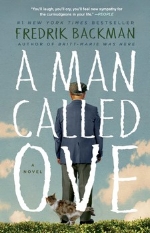Funny Story Emily Henry (2024) I had missed Emily Henry’s bestseller boat until I picked up this romance novel that some reviewers say is her best yet. The plot of Funny Story revolves around two tropes of the romance genre: fake dating and friends-to-lovers. Daphne’s fiancé, Peter, dumps her right before their wedding, and Daphne has to find a place to live quickly. Peter’s new girlfriend has also dumped her boyfriend, Miles, who has a spare room in his apartment that he offers to Daphne. She pegs Miles as a scruffy pothead, but she takes the room, since she knows little about (the fictional) Waning Bay, Michigan, where she relocated at the insistence of Peter. Got it? The one good thing in Daphne’s life is that she loves her work as a children’s librarian. And then Miles introduces her to the summertime grandeur of their lakeside town and its environs. The Daphne/Miles plot plays out with glittery dialogue (how could ordinary people come up with so many one-liners?) and some explicit sex scenes. Along the way, readers get a tour of the area around Traverse City, Michigan—the pristine Lake Michigan beaches, the sand dunes, the wineries, the farmers’ markets, the festivals. The characters tend to overanalyze themselves, but I raced through all 384 pages of Funny Story, inhaling the Michigan charm.
On this website I’ve reviewed many other books set in Michigan. Here are brief recaps of some of those reviews.
Tom Lake Ann Patchett (2023) In 2020, at the start of the pandemic, three young adult daughters of a family are hunkered down at their childhood home, a cherry and apple farm in Michigan, helping harvest the crops. They beg their mother to tell the full story of her summer romance with movie star Peter Duke, which took place back in 1988 when Duke was a struggling young actor. The mother obliges, and the novel toggles between 1988 and 2020. Novelist Patchett could ask for compensation from the Michigan Travel Commission, given her glowing descriptions of the state’s natural beauty, especially the area around Traverse City.
Adventures of a Girl Architect Hazel Harzinger (2018) Smart and hardworking Elena Troye is determined to become a practicing architect. In this witty, fast-paced novel, she recounts the ups and downs of breaking into a male-dominated profession. After a disastrous studio review at the University of Michigan, there's the seeming triumph of landing a job in glitzy, booming Las Vegas in 2006. When the national recession deepens in 2009, Elena returns to the Midwest for grad school and then the grueling architecture licensing exams. Along the way, she balances the professional with the personal—boyfriends, family ties, friendships. And she maintains her interest in fashion, even if that seems “girly.” In the workplace world of 2011-2014, Elena battles harassment from her superiors and mud on construction sites. She never gives up her dream of designing beautiful, functional buildings—and finding romantic happiness. Elena calls herself a “Girl Architect” with ironic self-mockery as she defies gender stereotypes. Click here to order Adventures of a Girl Architect by Michigan author Hazel Harzinger.
Hunter’s Moon Philip Caputo (2019) In seven linked short stories, Caputo summons up the wild allure of the far northern regions of the United States. Six of the stories take place in Michigan’s Upper Peninsula, which hovers around the 46th parallel of latitude, and the seventh is set even farther north, in Alaska. Each story revolves in some way around hunting or fishing: the appeal of rugged terrain, the terror of getting lost, and the reality of weapons violence. I don’t hunt, and I don’t understand the technicalities of rifles, but as you read Hunter’s Moon you can set those components aside and revel in Caputo’s descriptions of the natural world.
Mysteries by Aaron Stander (2000-2020) The sand dunes, the sunsets, the resiny scent of pine forests: Michiganders will recognize that Stander’s eleven murder mysteries are set in the northwest section of the Lower Peninsula. The main detective is Sheriff Ray Elkins, a rumpled middle-aged former professor of criminal justice from downstate who has retreated to the North Woods where he was raised. He’s surrounded by a distinctive cast of year-round residents, who disdain the vacationers renting beach houses during the glorious warm months. The many state references will tickle those who, like me, cherish our nation’s third (Great Lakes) coast. Small Michigan details drop in on almost every page. Click here for more of my reviews of books in this series.
We Hope for Better Things Erin Bartels (2019) Interracial relationships are the theme of Erin Bartels’ multi-century historical novel. In the present-day chapters, white Detroit journalist Elizabeth Balsam, following up on a lead about unpublished photos of the 1967 Detroit riots, ends up at her great-aunt Nora’s farmhouse in Lapeer, about an hour’s drive north of the city. A different layer of Elizabeth’s family history is revealed in chapters set in Lapeer in 1861, when the farmhouse was a stop for slaves fleeing on the Underground Railroad. That title? It’s from the motto for the city of Detroit: Speramus meliora; resurget cineribus. “We hope for better things; it will rise from the ashes.”
Beautiful Music Michael Zadoorian (2018) This is the touching story of a high school freshman at Redford High School, on Detroit’s far northwest side, in the early 1970s—a period of increasing racial tension and violence in the city. Danny Yzemski is a sweet, shy kid who’s bullied in school and beleaguered at home. His coming-of-age is aided by his discovery of the transformative power of hard rock music. The detailed descriptions of Danny’s neighborhood along the Grand River corridor—the routes he took, the stores he frequented—re-create the era precisely. Even the breakfast cereals that Danny eats are authentic to the period. For vintage Detroit flavor, tune in to Beautiful Music.
There’s nonfiction set in Michigan, also, as in this dual biography:
The Kelloggs: The Battling Brothers of Battle Creek Howard Markel (2017) In the small southwestern Michigan city of Battle Creek, two brothers distinguished themselves in separate but related arenas. John Harvey Kellogg (1852-1943), a physician and author, established the Battle Creek Sanitarium in 1878, treating thousands of patients and promoting some surprisingly prescient wellness regimens on both dietary and exercise fronts. In 1906, Will Keith Kellogg (1860-1951) founded the Battle Creek Toasted Corn Flake Company, now the Kellogg Company, revolutionizing breakfast foods through manipulation of ingredients and industrial mass production. Click here for my full review.


































